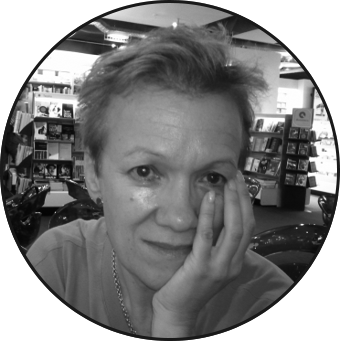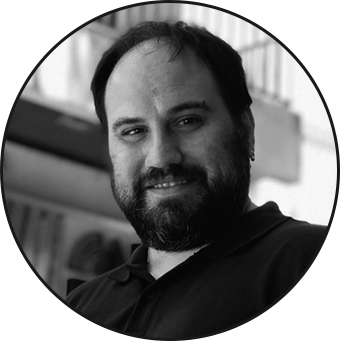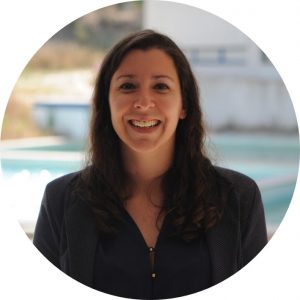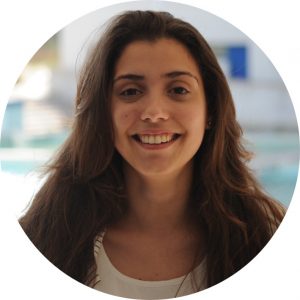TEAM

GRAÇA VIDEIRA LOPES
 Graça Videira Lopes (b. 1952), is a member of the steering board of the Instituto de Estudos Medievais at the NOVA University of Lisbon, where she has been a professor at the Department of Portuguese Studies since 1982. In 2004, she was also guest Professor, at the Université Paris IV, Sorbonne.
Graça Videira Lopes (b. 1952), is a member of the steering board of the Instituto de Estudos Medievais at the NOVA University of Lisbon, where she has been a professor at the Department of Portuguese Studies since 1982. In 2004, she was also guest Professor, at the Université Paris IV, Sorbonne.
After a PhD in Medieval Literature (1993), specifically on the Galician-Portuguese satirical songs, she has been working and publishing on the troubadours’ world. In this area, she was the chief researcher of “Littera’s Project”, a project also funded by FCT, which resulted in the Galician-Portuguese Medieval Songs database and site, online since 2011, (http://cantigas.fcsh.unl.pt).
In addiction to several papers, she is the author of the books:
Cantigas galego-portuguesas – corpus integral profano, Lisboa, Biblioteca Nacional, 2016 (with Manuel Pedro Ferreira)
Do canto à escrita: novas questões em torno da Lírica Galego-Portuguesa. Nos cem anos do Pergaminho Vindel, Lisboa, IEM/CESEM, 2016 (with Manuel Pedro Ferreira)
Cantigas de trovadores – de amor, de amigo, de maldizer, Jornal Público, 2015
Cantigas trovadorescas: da Idade Média aos nossos dias (with Manuel Masini), Lisboa, IEM, 2015
Cantigas de escárnio e maldizer dos trovadores e jograis galego-portugueses, Lisboa, Editorial Estampa, 2002
A sátira nos cancioneiros medievais galego-portugueses, Lisboa, Ed. Estampa, 1998
Graça Videira Lopes (IR)

MARIA JOÃO MELO
 Maria João Melo is a Full Professor at the Department of Conservation and Restoration of the Faculty of Sciences and Technology-NOVA University of Lisbon, and a researcher at LAQV-Requimte and IEM at NOVA.
Maria João Melo is a Full Professor at the Department of Conservation and Restoration of the Faculty of Sciences and Technology-NOVA University of Lisbon, and a researcher at LAQV-Requimte and IEM at NOVA.
After a PhD in Physical Chemistry (1995), specifically in Photochemistry, she decided to apply her expertise towards conservation of works of art. As Italy is a leader in this area, she chooses to do her PostDoc in Florence (1996-98), working at the Italian Research Council (CNR). She became an expert in infrared spectroscopy applied to cultural heritage and started research on the photodegradation mechanisms in polymeric systems, predicting performance lifetimes.
Her current research subjects are focused in the study of the molecules of colour in Art, namely the photophysics and photochemistry of historical dyes. This knowledge is applied in the development of new conservation methodologies of Medieval Illuminations and of Contemporary Art.
Her present challenge is to strengthen her interdisciplinary research and approach, at the frontiers of the social and natural sciences, promoting public engagement.
Maria João Melo (co-IR)

MARIA ANA RAMOS
 Maria Ana Ramos graduated from the Universidade Clássica de Lisboa at the Faculty of Letters (master and PhD), where she was a professor of History of the Portuguese Language for several years. After a specialization in Romance Philology at the University of Rome, at La Sapienza (three years), she currently works at the Romanisches Seminar at the University of Zurich, where she teaches Portuguese Language, Linguistics, Literature and Philology since 1986 and where she also obtained Qualification (Aggregation) in Romance Philology and the direction of the Carlos de Oliveira Chair (Camões IP).
Maria Ana Ramos graduated from the Universidade Clássica de Lisboa at the Faculty of Letters (master and PhD), where she was a professor of History of the Portuguese Language for several years. After a specialization in Romance Philology at the University of Rome, at La Sapienza (three years), she currently works at the Romanisches Seminar at the University of Zurich, where she teaches Portuguese Language, Linguistics, Literature and Philology since 1986 and where she also obtained Qualification (Aggregation) in Romance Philology and the direction of the Carlos de Oliveira Chair (Camões IP).
The major domains of her research are the history of Galician-Portuguese lyric, the textual variations of his production, its transmission processes and the medieval and the renaissance reception of poetic collections, particularly with regard to the Ajuda Songbook , a codex on which she has developed an in-depth work, having published, in addition to the essay accompanying the facsimile edition of this Cancioneiro (1994)and its the diplomatic edition (2007), a study that elicits the eloquence of the blanks in this manuscript (1986), which allowed a significant reflection on the specificity of musical prediction for the finfas in the Galician-Portuguese lyric (1984) and on the meaning of the syllabic and intervocabulary separation of some terms depending on the pneumatic notation predicted in the manuscript (1995). Already in 2008, she published an extensive study based on the codicological, paleographic and graphematic examination of the manuscript (Cancioneiro da Ajuda, Confecção e Escrita).
In addition to this essential domain, she was also interested in several other domains of medieval literature, including brief narrative forms, the linguistic aspects of Gil Vicente’s theater, the examination of an artificial language during the sixteenth century, the language of the gypsies (2003), and also sought to study the literary period in France of the prince Afonso, le Boulonnais, future Afonso III of Portugal, responsible for the cultural dynamics of the Portuguese court (2003, 2005, 2011, 2013).
Maria Ana Ramos

MANUEL PEDRO FERREIRA
 Manuel Pedro Ferreira (n. 1959) has a PhD in Musicology from Princeton University (1997) and teaches since 2000 at the Faculty of Social and Human Sciences of the Nova University of Lisbon, where he coordinates the Center for Sociology and Musical Aesthetics Studies (CESEM) and holds the chair of Historical Musicology . He has dedicated himself mainly to teaching and researching Middle Ages and the Renaissance music, without neglecting the musical interpretation: since 1995 he has directed the Vozes Alfonsinas group, with which he recorded five albums. As a musicologist, he has published more than two hundred scientific papers and books and directed several research projects. He wrote or coordinated more than twenty books, including: O Som de Martin Codax (Lisboa, 1986); Cantus coronatus — Sete cantigas d’amor d’El-Rei Dom Dinis (Kassel, 2005); Dez compositores portugueses. Percursos da escrita musical no século XX (Lisboa, 2007); Antologia de Música em Portugal na Idade Média e no Renascimento, 2 vols. (Lisboa, 2008); Medieval Sacred Chant: from Japan to Portugal (Lisboa, 2008); A Sé de Braga. Arte, Liturgia e Música, do final do século XI à época tridentina (Lisboa, 2009); Aspectos da Música Medieval no Ocidente Peninsular, 2 vols. (Lisboa, 2009-2010); Revisiting the Music of Medieval France: from Gallican chant to Dufay (Farnham-Burlington, 2012); Harmonias do Céu e da Terra: A música nos manuscritos de Guimarães (séculos XII-XVII) (Lisboa-Guimarães, 2012); Musical exchanges, 1100-1650: Iberian connections (Kassel, 2016), Música e História: Estudos em homenagem a Manuel Carlos de Brito (Lisboa, 2017) e A Notação das Cantigas de Santa Maria: Edição Diplomática, 3 vols. (Lisboa, 2017).
Manuel Pedro Ferreira (n. 1959) has a PhD in Musicology from Princeton University (1997) and teaches since 2000 at the Faculty of Social and Human Sciences of the Nova University of Lisbon, where he coordinates the Center for Sociology and Musical Aesthetics Studies (CESEM) and holds the chair of Historical Musicology . He has dedicated himself mainly to teaching and researching Middle Ages and the Renaissance music, without neglecting the musical interpretation: since 1995 he has directed the Vozes Alfonsinas group, with which he recorded five albums. As a musicologist, he has published more than two hundred scientific papers and books and directed several research projects. He wrote or coordinated more than twenty books, including: O Som de Martin Codax (Lisboa, 1986); Cantus coronatus — Sete cantigas d’amor d’El-Rei Dom Dinis (Kassel, 2005); Dez compositores portugueses. Percursos da escrita musical no século XX (Lisboa, 2007); Antologia de Música em Portugal na Idade Média e no Renascimento, 2 vols. (Lisboa, 2008); Medieval Sacred Chant: from Japan to Portugal (Lisboa, 2008); A Sé de Braga. Arte, Liturgia e Música, do final do século XI à época tridentina (Lisboa, 2009); Aspectos da Música Medieval no Ocidente Peninsular, 2 vols. (Lisboa, 2009-2010); Revisiting the Music of Medieval France: from Gallican chant to Dufay (Farnham-Burlington, 2012); Harmonias do Céu e da Terra: A música nos manuscritos de Guimarães (séculos XII-XVII) (Lisboa-Guimarães, 2012); Musical exchanges, 1100-1650: Iberian connections (Kassel, 2016), Música e História: Estudos em homenagem a Manuel Carlos de Brito (Lisboa, 2017) e A Notação das Cantigas de Santa Maria: Edição Diplomática, 3 vols. (Lisboa, 2017).
He has also been regularly a music critic and made inroads for musical composition and poetry. He is a member of the European Academy (since 2010) and the board of the International Society of Musicology (since 2012).
Manuel Pedro Ferreira

JOSÉ ANTÓNIO SOUTO CABO
 José António Souto Cabo graduated from the University of Santiago de Compostela (PhD in 1997), where he is a full professor of the Galician and Portuguese Philology at the Faculty of Philology.
José António Souto Cabo graduated from the University of Santiago de Compostela (PhD in 1997), where he is a full professor of the Galician and Portuguese Philology at the Faculty of Philology.
His preferential domains of investigation are the history of the language during the medieval period and the sociocultural context in which Galician-Portuguese lyrical arises and develops. In the first line are included works of editing and study of literary texts and instrumental documentation such as: Rui Vasques. Crónica de Santa Maria de Íria (2001), “Na origens da expressão escrita galego-portuguesa. Documentos do século XII” (2003), “A transição scriptográfica na produção documental portuguesa de 1257 a 1269” (2004), “Novas perspectivas sobre a génese da scripta romance na área galego-portuguesa. Textos e contextos” (2004), “Originais e cópias da Chancelaria de Afonso III: o exemplo de uma composição de 1257” (2005), Documentos galego-portugueses dos séculos XII e XIII (2008) or “Os primeiros escritos em galego-português: revisão e balanço” (2014).
As to the second field, he had published, among others: “Para um novo enquadramento histórico-literário de Airas Fernandes, dito “Carpancho” (2003), “Pedro Garcia de Ambroa e Pedro de Ambroa” (2006), Os cavaleiros que fizeram as cantigas. Aproximação às origens socioculturais da lírica galego-portuguesa (2012), “Fernando Pais de Tamalhancos: trovador e cavaleiro” (2012), “Lopo Lias: entre Orzelhão e Compostela” (2012), “In capella domini regis in Ulixbona e outras nótulas biográficas trovadorescas” (2012), “En Santiago, seend’ albergado en mia pousada. Notulas trovadorescas compostelanas” (2014), “Estudo biográfico [do trovador Nuno Eanes Cerzeo]” (in El arte de trovar de amor. Nuno Eanes Cerzeo y su producción poética, 2018), “En cas da Ifante. Figuras femininas no patrocínio da lírica galego-portuguesa (I)” (2016), “Et de dona Guiomar nascio don Rodrigo Diaz de los Cameros. Figuras femininas no patrocínio da lírica galego-portuguesa (II” (2018), “Martim Codax e o fenómeno jogralesco na Galiza sul-ocidental” (2018).
Finally, we will mention two works on the handwritten tradition of historical romances or Latin productions such as: “A Crónica dos ministros gerais da Ordem dos Fraires Menores (BN 94 IL) e o seu antígrafo galego” (2016), “Liber Regristi Didaci secundi. Sobre a tradição manuscrita da História Compostelana” (2018).
José Souto Cabo

FABIO BARBERINI

Fabio Barberini. PhD in Gallo-Romanian Philology from the University of Messina (2014), he is a researcher at the Universidade Nova de Lisboa – FCSH, and an integrated member of the Institute of Medieval Studies (IEM). Since 2013 he has been a member of the Writing Committee of Cultura Neolatina magazine. Works on medieval Romanesque lyrical, namely Provencal, French and Galician-Portuguese (handwritten tradition and edition of texts); Anglo-Norman literature and relations between Jews and Christians in the 13th-14th centuries. He was a researcher in several international projects, including Manuscript Heritage of the Troubadours (MHT). Le Patrimoine manuscrit des Troubadours en pays d’Oc. Édition numérique du Chansonnier provençal R (2016-2017: Université de Toulouse 2 “Jean Jaurès” – CNRS); CAO “Corpus dell’Antico Occitanico” (2018: Università di Chieti-Pescara); Mecenazgo y creación literaria en la corte catalano-aragonesa (s. XIII-XV): evolución, contexto y biblioteca digital de referencia (2018: Universitat de Girona) e Troubadours and European Identity: The Role of Catalan Courts(2018: Universitat de Girona).
Fabio Barberini

TIAGO VIÚLA FARIA

Tiago Viúla de Faria (DPhil Oxford, 2013) is coordinator of research group Territories and Powers and a member of the steering board of the Instituto de Estudos Medievais at the NOVA University of Lisbon. His main interests have been in external relations and policy-making in West Europe and Portugal especially, and he has worked more broadly on issues of cultural and literary transfer, including on the transmission of medieval texts. He is part of the ongoing “Fernão Lopes Translation Project”, based at the University of Georgia (PI Amélia Hutchinson), and is the editor of Philippa of Lancaster and the Court Culture of Medieval Portugal, forthcoming with Palgrave MacMillan.
Tiago Viúla Faria

ANA RAQUEL ROQUE

Ana Roque obtained her BA in Literature and Culture (2010) and MA in Portuguese Studies (2013) from the Universidade Nova de Lisboa (FCSH). Her dissertation was entitled “A ficção da voz feminina nas cantigas de D. Dinis”. She is currently preparing a PhD thesis on “Vozes Femininas Galego-Portuguesas no Contexto Medieval Europeu” for which she was awarded an FCT scholarship (2015-2017).
As a a full member of the Instituto de Estudos Medievais and a collaborating member of CHAM (both FCSH-UNL), she has focussed on medieval Galician-Portuguese literary studies and on Fernando Pessoa’s body of work. She took part in “Littera”, a project which has resulted in the Galician-Portuguese Medieval Songs online database.
She taught at the Instituto Superior de Contabilidade e de Administração de Coimbra between 2013 and 2015.
Ana Raquel Roque

PAULA SOFIA FONSECA NABAIS
 Paula Nabaisis a Researcher at the Department of Conservation and Restoration and LAQV-Requimte Research Unit, from the NOVA School of Science and Technology, NOVA University of Lisbon. Her Ph.D. project, entitled “Identity and connections within medieval heritage: color in the illuminated manuscript through the eyes of the molecular sciences and humanities,” was granted the award “Estimulo à Investigação” for the Chemistry Area by the Calouste Gulbenkian Foundation. It encompassed the development of innovative methodologies for the identification and characterization of organic colorants in artworks. Recently, she has been dedicated to the study of medieval manuscripts and some of the most challenging materials to characterize in these artworks, iron-gall inks and yellow dyes. She is also a team member in two projects financed by the Portuguese Foundation of Science and Technology, Stemma and Polyphenols in Art.
Paula Nabaisis a Researcher at the Department of Conservation and Restoration and LAQV-Requimte Research Unit, from the NOVA School of Science and Technology, NOVA University of Lisbon. Her Ph.D. project, entitled “Identity and connections within medieval heritage: color in the illuminated manuscript through the eyes of the molecular sciences and humanities,” was granted the award “Estimulo à Investigação” for the Chemistry Area by the Calouste Gulbenkian Foundation. It encompassed the development of innovative methodologies for the identification and characterization of organic colorants in artworks. Recently, she has been dedicated to the study of medieval manuscripts and some of the most challenging materials to characterize in these artworks, iron-gall inks and yellow dyes. She is also a team member in two projects financed by the Portuguese Foundation of Science and Technology, Stemma and Polyphenols in Art.
Paula Sofia Nabais





